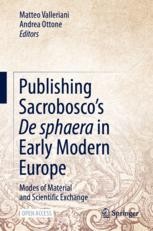
The Rise and Impact of Mathematical Experts in Renaissance Europe
Throughout the medieval era, European universities paid minimal attention to mathematics. The educational framework included the quadrivium—arithmetic, geometry, music, and astronomy—but these disciplines were typically taught in a cursory manner and lacked prestige. Mathematics classes were often assigned randomly, leading those who received them to be viewed as bearing an academic burden rather than enjoying an opportunity.
In contrast, outside the universities, the narrative was substantially different. Professional mathematicians, known as mathematical experts, found roles within aristocratic courts. Many primarily acted as astrologers, but they also constructed sundials, computed calendars, and designed instruments. Although they provided valuable services, these figures were regarded as craftsmen instead of scholars. A notable case is Nicolas Kratzer (1487–c. 1550), who created sundials for King Henry VIII but was compensated less than the royal falconer.
By the mid-fifteenth century, however, the reputation of mathematical experts began to experience a notable transformation, driven by an amalgamation of intellectual revival, scientific interest, and the practical necessities of navigation, military affairs, and statecraft.
Origins of the Elevation: The Early Viennese School and the Resurgence of Astronomy
This transformation commenced with the rise of the Early Viennese School of Mathematics, which counted among its members scholars like Johannes von Gmunden (c.1380–1442), Georg von Peuerbach (1423–1461), and Johannes Regiomontanus (1436–1476). Their contributions reinvigorated the study of Ptolemaic mathematical astronomy, establishing the groundwork for subsequent astronomical progress. Peuerbach and Regiomontanus, eager reformers of the popular astronomical models of the time, highlighted the significance of computational enhancement and observational exactness.
This reform initiative directly influenced the endeavors of Nicolaus Copernicus (1473–1543), whose heliocentric theory would profoundly reshape the theoretical framework of astronomy. Ultimately, Johannes Kepler (1571–1630) employed mathematical models to validate the existence of planetary orbits, solidifying mathematical astronomy as an esteemed and vital area of natural philosophy.
Integration with Renaissance Humanism: Astro-Medicine and Academic Positions
The Renaissance experienced a considerable increase in the enthusiasm for utilizing ancient texts to address practical issues, with medicine and astrology merging notably in the discipline of iatromathematics, or “health mathematics.” Humanist scholars recognized the importance of employing astronomy to guide medical diagnoses and treatments. Consequently, academic chairs for mathematics were established in universities—particularly in Northern Italy and Krakow—highlighting the growing academic recognition of the mathematical expert.
Cartography and Geography: The Ptolemaic Renaissance
The 1406 rediscovery of Ptolemy’s Geographia (also referred to as Cosmographia), translated into Latin by Jacobus Angelus, reintroduced mathematical cartography to Europe. In contrast to medieval mappa mundi that focused on theological symbolism rather than geographic accuracy, Ptolemaic cartography employed mathematics and astronomy to map the world with precision.
The age of exploration heightened the necessity for accurate mapping. As European nations navigated ships around Africa, across the Atlantic, and into the Indian Ocean, navigators needed precise tools and navigational charts. Gemma Frisius (1508–1555) revolutionized cartography by introducing triangulation in surveying, detailed in his pamphlet Libellus de locorum describendum ratione (1533).
Navigation and Maritime Exploration
The expeditions of Bartolomeu Dias (1488), Christopher Columbus (1492), and Vasco da Gama (1497–99) underscore the increasing significance of mathematics in navigation. These extensive undertakings demanded ever more precise navigational instruments and mathematical computations. Skilled mathematical experts devised and refined tools such as astrolabes, back-staffs, nocturnals, and portolan charts.
Nevertheless, early portolan charts, suited for smaller bodies of water like the Mediterranean, portrayed Earth as a flat surface. This approach proved inadequate for larger expanses such as the Atlantic Ocean. Mercator’s renowned projection (published 1569) addressed this challenge by maintaining angles and lines of constant compass bearing—an essential breakthrough for deep-sea navigation. Although Gerardus Mercator (1512–1594) never clarified the mathematical underpinnings of his projection, these were later explained by English mathematician Edward Wright in 1599.
Military Applications: Artillery and Fortification
The sixteenth century also saw remarkable advancements in the utilization of mathematics for warfare. The rise of field artillery called for studies in ballistics—calculating trajectories, optimizing cannon deployment, and designing defensive structures to endure bombardment. This led to the conception of bastion fortifications, star-shaped designs that permitted overlapping fields of cannon fire.
Artist-engineers like Giuliano da Sangallo and Albrecht Dürer (1471–1528) authored treatises on fortifications anchored in geometric principles. The role of the mathematician became as